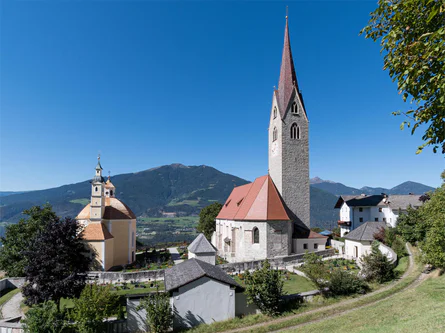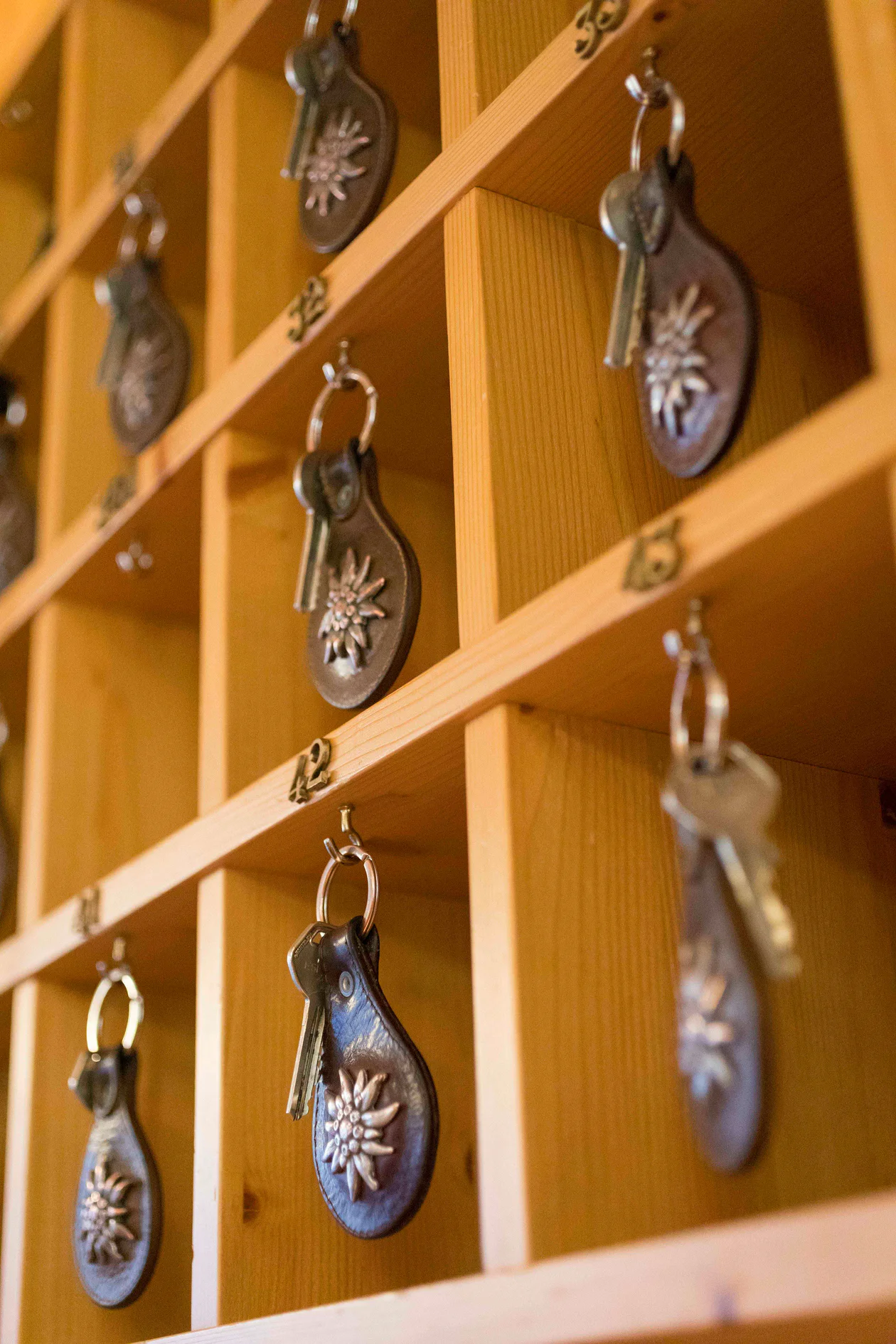The parish church of the same name, which was first mentioned in 1177, is located in the rapidly growing capital St. Andrä. Its late gothic reconstruction in the period around 1485 with a presbytery and tower which is still characteristic today. In the 18th century a striking baroque style was introduced. Georg Tangl, director of the Brixen seminary and priest of St. Andrä, provided for a rich decoration with stucco (Franz Singer) around 1770. Around 1736 the ceiling frescoes by Jakob Jennewein depicting the martyrdom of St. Andrew were painted. In 1930 the altarpiece was painted by Johann Baptist Oberkofler.
The Maria Hilf Chapel in the cemetery is a compact octagonal building dating from 1696, and the octagon, a work by the Bolzano master builder Delai, is considered an important model of Baroque central building. The altars of Mary, Anthony and Notburga are also works of art from the late 17th century.

















































































